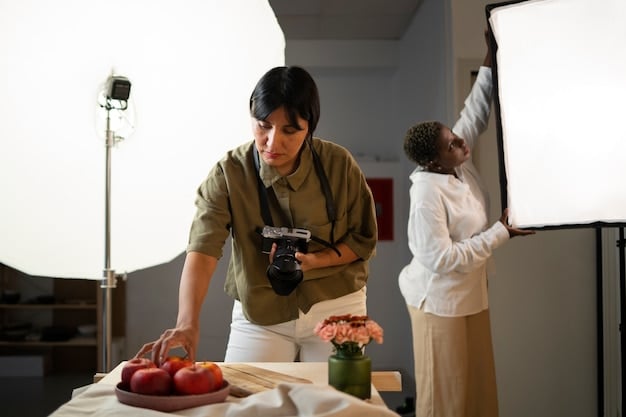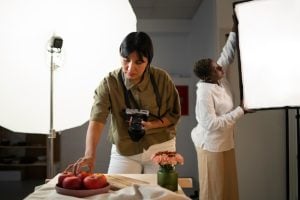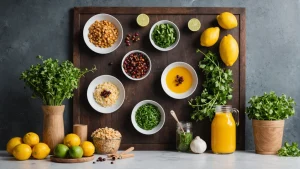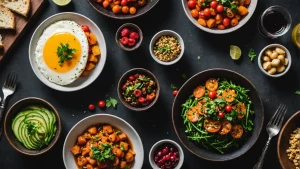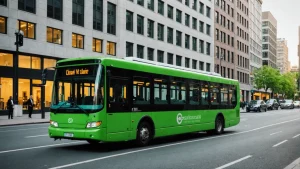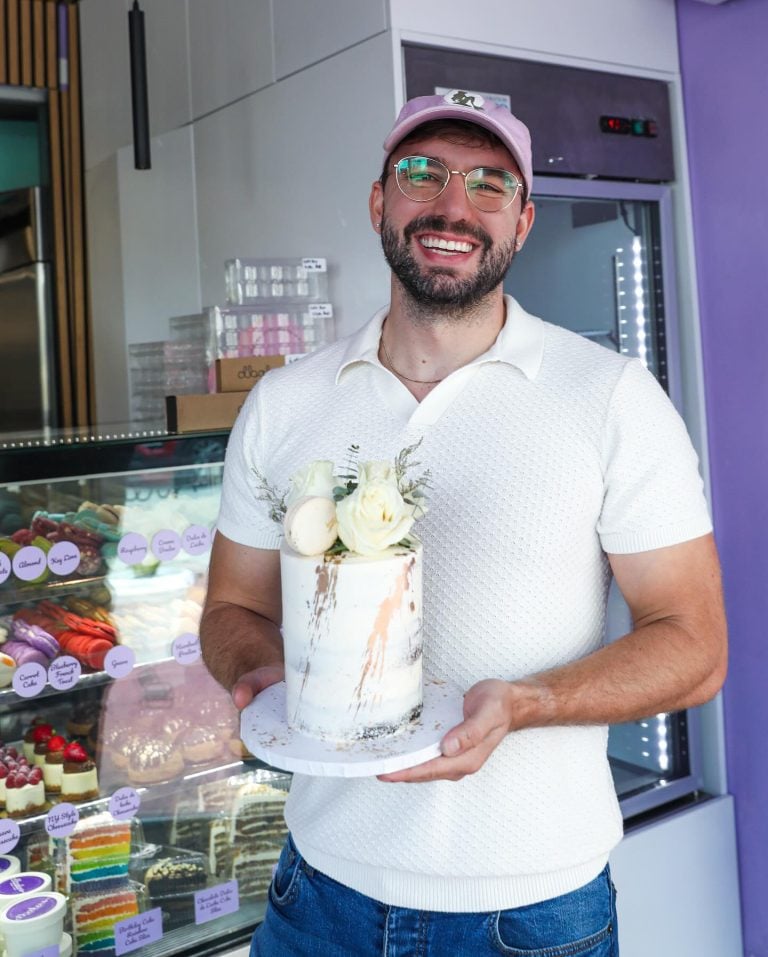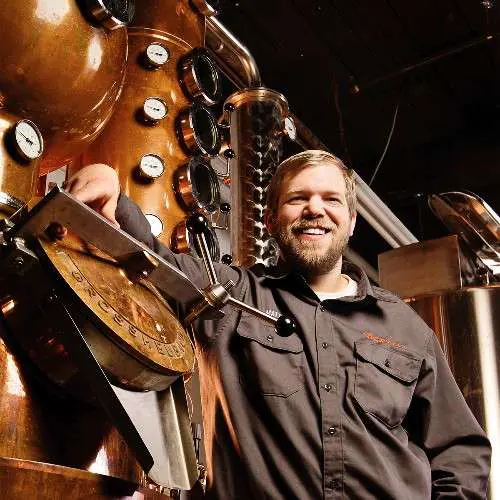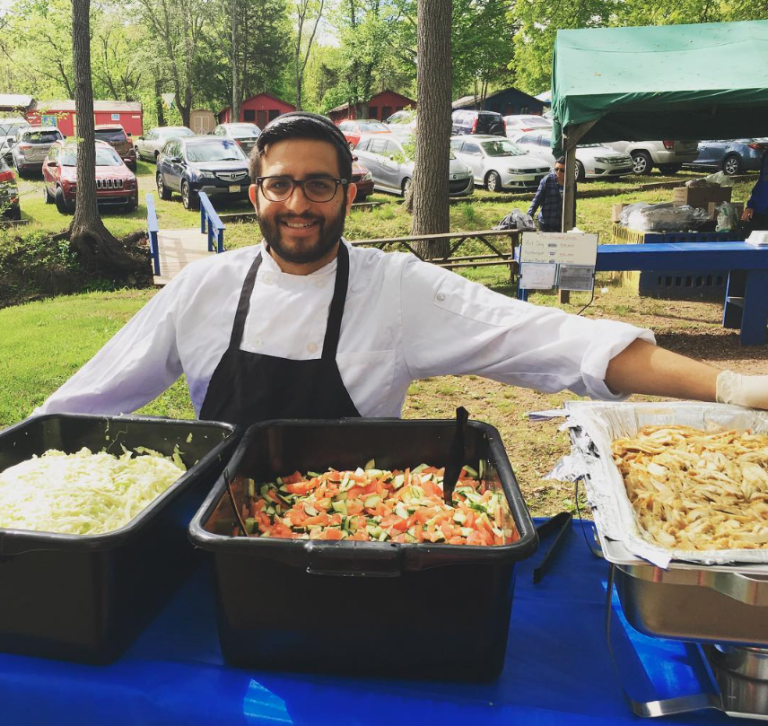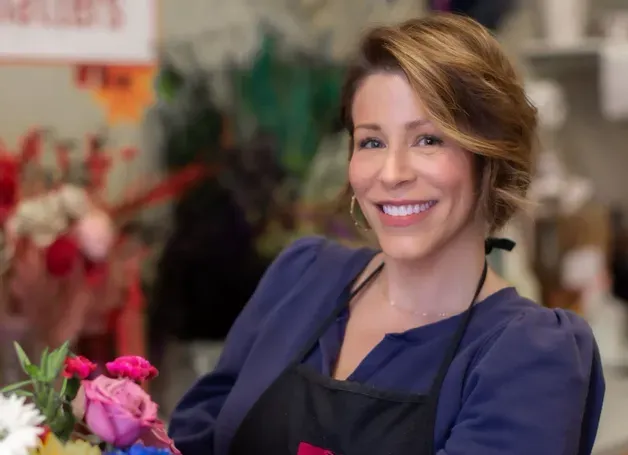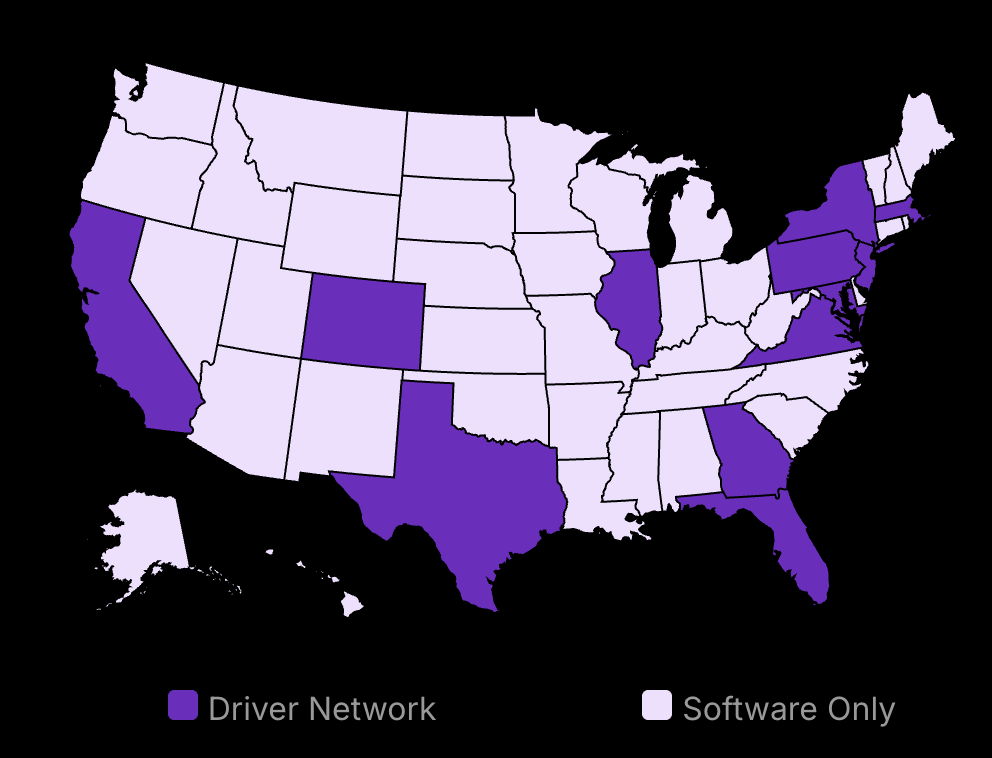Food photography lighting fails because of three basic mistakes: wrong light direction, incorrect diffusion, and poor shadow control. Whether you’re shooting food for a personal project or a commercial campaign, understanding the entire process of lighting is crucial. Professional food photographers achieve stunning results by carefully positioning their key light, setting up an artificial lighting set, and refining their food photography lighting setup to look natural while highlighting textures and colors.
A well-executed setup places the light source at a 45-degree angle from the back of the dish, uses large softboxes for diffusion, and controls shadows with white bounce cards. But there’s more to it than just placing lights—adjusting for different directions, experimenting with angles, and fine-tuning shadows all contribute to the final shot.
In this free guide, we’ll take you behind the scenes to break down these three essential techniques. You’ll see real examples, learn how to work with your lens and discover how small tweaks in lighting can completely transform your scene shot. Whether you’re a beginner or an experienced photographer, mastering these principles will help you capture food images that are both clean and professional.

Save 80% of delivery management time
We handle everything:
- Dedicated operations manager
- Real-time tracking dashboard
- Automated customer notifications
- Urgent issue resolution
Why does lighting for food photography matter?
Good lighting changes the mood and feel.
It can make or break a photo with shadows and highlights.
Appetizing photos need proper lighting.
Lighting Sets the Mood and Highlights Textures
Lighting for food photography is what shapes the mood. The right lighting makes textures stand out, which adds depth. Natural light, with its warm tone, makes food look authentic. Artificial lights offer more control and can mimic natural environments. Textures are important. Imagine shooting a bowl of soup. Side lighting reveals the details of floating herbs or spices. Lighting from different angles can show these textures, making the dish pop. Recent surveys showed that people find food more appetizing when side-lit, showcasing these elements better.
Artificial Light, Shadows and Highlights Can Enhance or Ruin a Photo
Shadows and highlights either enhance a photo of food or break it. Proper use adds dimensions and draws attention to certain areas. But too much shadow hides important details. Overexposed highlights can wash out colors. Photographers need to balance these elements. This means using diffusers or reflectors. One common debate revolves around whether to use more shadows or keep photos brighter. Some say shadows add drama, while others prefer bright, clear shots. The key is finding what works best for each specific dish.
Proper Lighting Makes the Dish Look Appetizing and Professional
Proper lighting makes food photos way more appealing. For professionals, this can mean big sales. Recent studies show that high-quality food photos boost menu sales. Bright, well-lit photos also perform better online, getting more likes on platforms like Instagram. This improves engagement and helps restaurants and bloggers reach a wider audience. The debate between natural versus artificial lighting is ongoing. Lots of professionals use a mix. This helps with tricky shots where natural light can’t work alone, keeping photos consistent and looking tasty.
What Lighting is Best for Food Photography?
The best lighting depends on the situation. Natural light is great for its warmth and soft shadows, especially in areas with big windows. But it’s not always available. Artificial light provides consistent results. LED panels are popular because they let you control brightness and color temperature. Another common question relates to light types. Which is better? Continuous light or flash? Each has its pros. Continuous lights are easier for beginners. They let you see how light falls on the item in real-time. Flash can be more powerful, but it needs more skill and setup time.
Preferred Camera Settings
Camera settings matter. Choose the right aperture, ISO, and shutter speed. For most food photography, an aperture around f/5.6 to f/8 keeps most things in focus but lets backgrounds blur a bit. Keep ISO low for clear images. Adjust shutter speed based on available light. These settings ensure that the lighting shines and the food stands out in the best way possible.
What to do when facing lighting challenges?
Know if your problem is with where the light comes from or its strength.
Change the lights. Softboxes or reflectors can ease strong light.
Try different angles. Shift the light or dish for the best view.
Identify if the issue is lighting location or intensity
Start by figuring out the root of your problem. Knowing this helps in planning your next moves.
Assess the Lighting Location: Stand where your camera would be. Look at your setup. Ask yourself if windows or lights are affecting the scene. Check which way the light hits the food. If it’s uneven or not flattering, changing the light’s position could help.
Check Light Intensity: Now, inspect light strength. Is it too bright, making food look washed out? Or too dim, leaving unwanted shadows? If it’s either, you might need to tweak the light’s power or use filters.
Understanding these first steps will create the foundation for changes.
Adjust light sources
To fix lighting problems, changing your lighting setup can make a big difference.
Control Harsh Light with SoftBoxes or Reflectors: If your setup feels too harsh, introduce a softbox. Softboxes spread light in a softer way, avoiding harsh shadows. Reflectors bounce light into shadows, brightening them without extra light.
Modify Existing Light: Alter the direction or distance of your lights. Even swiveling a light just a bit or pulling it back a few inches can lead to a better balance between light and dark areas.

Lighting tools tweak your setup without changing everything. This keeps your food photography session adaptable. By integrating innovative tools like AI in your photography, you can further enhance your setups. Today’s advancements in technology are making it easier for photographers to create stunning visuals with less effort, showing how artificial intelligence significantly impacts product photography. This evolution can lead to improved creativity and efficiency in capturing images that truly represent your offerings.Learn more about how AI product photography can help transform your business.
Experiment with angles
Finding the right angle can change how food is shown. It’s about enhancing what makes the dish look best.
Shift Light Angles: Moving your light to shine from different sides can highlight food textures. Positioning light from the side often adds depth, like showing a plate’s details.
Move the Dish: Sometimes, adjusting the dish can fix problems faster than shifting the light. Turn the dish to see how shadows and highlights adjust. Slight movements can lead to better outcomes.
Test and Evaluate: Take several shots at various angles. Compare them to see what flatters the dish most. This practical approach saves time and effort while producing better shots.

Tips for best angles
Start with side lighting, and adapt from there.
Turn the dish to see which angle it catches light best.
How to prevent lighting issues in the future?
Shoot in the late morning when natural light is good.
Buy quality lighting for steady results.
Use light stands and tripods for stability.
Plan Shoots When Natural Light is Best
Natural light is your best friend in food photography. Many photographers swear by late morning. This is when the light is bright but not too harsh. To plan your shoots effectively:
Scout for Natural Light: Observe the area where you plan to shoot. Look at how the light changes throughout the day. Which spots get the best light?
Know Your Timing: Late morning, usually between 9 AM to 11 AM, gives a soft yet bright light. This avoids the intense midday sun which can be too harsh and create unwelcome shadows.
Use Location Wisely: Near windows is often the best spot. Arrange your setting close to a window for direct natural light. If the light is too intense, sheer curtains or a diffuser can help soften it.
Invest in Quality Lighting Equipment for Consistency
Quality lighting gear makes a big difference. It helps keep your photos consistent, regardless of outside conditions:
Purchase Reliable Light Sources: Consider LED panels that offer adjustable brightness and color temperature. This lets you mimic natural light or create specific moods as needed.
Consider Soft Boxes or Umbrellas: These help diffuse the light, reducing harsh shadows and creating a more even spread over your food subject. They are invaluable for indoor setups without natural light.
Invest in Reflectors: Reflectors bounce light back onto your subject. This can fill in shadows and create an even lighting effect. Gold, silver, and white reflectors each give different warmth and brightness levels.
Where to Buy
Check online photography stores for the best deals.
Look for reviews to ensure quality.
Some stores may offer bundles that include stands, diffusers, and reflectors.
Take Advantage of Light Stands and Tripods for Stability
Stability is key to clear, professional-looking photos. Unsteady hands can ruin a perfect shot. Here’s what you’ll need:
Choose a Sturdy Tripod: Select one that can handle your camera’s weight and remains stable. The ability to adjust height is also crucial to match your shoot’s needs.
Use Light Stands for Positioning: Light stands help place your lights at the right angles. Opt for adjustable height stands to match different setups. Stability is vital to avoid any shifts during shooting.
Set Up Camera on Tripod: Ensure your camera is firmly mounted on the tripod. Double-check that everything is tight and secure.
Adjust and Test: Once set up, take a few test shots. Look for any shifts in lighting or shadows and adjust accordingly.
By following these steps, you’ll have a solid foundation for your shoots. This steadiness will reflect in the clarity and quality of your photos.
Testing Your Setup
Take test shots and analyze.
Adjust lighting and tripod as needed.
Keep testing until every component is perfect.
These practices ensure you get the most out of your lighting setup, making future shoots much more efficient and successful.
What else can I use these lighting skills for?
Expand skills to enhance all types of photography.
Create consistency across various visual content types.
Broaden your projects with versatility in lighting techniques.
Use for Consistent Product Photography
Building product photography skills is invaluable. This realm demands consistency. Customers crave visuals that show the true essence of the product. Lighting plays a pivotal role. Mastering it can influence how prospective buyers perceive the product. Employing softboxes or diffused window light helps in achieving balanced illumination. They prevent harsh shadows and even out light intensity. It highlights the product’s features naturally.
Exploring texts like “Light: Science and Magic” offers deep insights into technical aspects of product lighting. On the flip side, too much reliance on artificial light risks losing color authenticity. It could impact the visual appeal adversely. Combining techniques learned from food photography often provides a good base. It leads to creative experimentation. Professionals might explore courses like those from CreativeLive for hands-on instruction. For those looking to deepen their understanding of this art form, visiting an extensive resource such as the ultimate guide to food photography can greatly enhance your skills. This guide offers tips on lighting, composition, and techniques that are essential for capturing mouthwatering images.
Portrait Photography for Natural Looks
Lighting in portraits can transform an image. It highlights facial expressions and adds emotion. Natural lighting is often preferred to flatter the subject. Techniques such as Rembrandt’s lighting craft a distinctive look with a small shadow under the nose. It’s popular among professional photographers. Books like “Studio Anywhere” by Nick Fancher serve as a guide to creating various moods with minimal gear.
However, challenges arise when lighting isn’t balanced, which can lead to harsh lines or unflattering shadows. It’s crucial to test different angles and setups. Some professionals invest heavily in ring lights to achieve even facial illumination. A blend of ambient and artificial sources often gets preferred. Full-time portrait photographers may even consider mentorships to refine their skills.
Elevate Social Media Content
Social media lives and breathes visual appeal. Optimal lighting could mean the difference between scrolling past and clicking on the post. Effective lighting helps elevate a brand’s image. It’s crucial for influencing viewer engagement. Adopting bright and natural lighting often works in favor. It draws attention while maintaining authenticity, which is key in boosting interaction rates. Knowing how to manipulate light introduces creativity into content creation. It allows for unique presentations of everyday scenes. Published data suggests posts with bright lighting receive up to 24% more engagement. On the contrary, over-edited darker images may not resonate as well. Platforms continually evolving keep photographers on their toes. Community forums often become a catalyst for sharing ideas and trends.
Macro Photography for Intricate Details
Macro photography thrills with its attention to detail. Lighting techniques are central. They reveal each subtle element of the tiniest subjects. Techniques borrowed from food photography aid in this venture. Precise positioning becomes vital. Techniques like ring flashes or portable light tents maintain lighting consistency. Light diffusion is essential in macro. It softens shadows and enhances colors. Achievements in this space rely on in-depth knowledge and practice. Reading “Close-Up Photography” by Michael Freeman sheds light on advanced perspectives. However, controlled environments sometimes limit spontaneity. Situations might require rapid shifts in settings. Some photographers argue natural light impacts authenticity. Workshops focussing on rapid adaptations might assist photographers.
Event Photography Under Diverse Conditions
Event photography thrives on spontaneity. Skills developed in controlled food lighting environments become adaptable. They help in diverse setting optimizations like weddings,. Each moment becomes unique under varying lighting states. Events require adaptability to unpredictable light changes. Balancing between ambient and added artificial light sources is crucial.
Books like “Photographing Events & Weddings” delve deeper into such challenges. Such photography gains from speed and understanding lighting shifts, ensuring quality. Yet, too much artificial light might undermine the atmosphere, making it look staged. Decisions in gear setups affect the consistency of results. Offering workshops tutorials, and resources across photography platforms support ongoing learning. Developing a community around this niche often fuels creativity and knowledge sharing.
Additional tips and common pitfalls
Missed exposures can ruin photos. Correct with ISO and shutter adjustments.
Light positioning is crucial for depth. Avoid flattening the image.
Soft light is best. Direct flashes create unpleasant shadows.
Common lighting mistakes in food photography and solutions
Accurate lighting is essential in food photography. However, the path is filled with challenges. One prevalent error is overexposing shots. This can strip away colors and mute vibrancy. Lowering the ISO can help maintain more realistic tones without losing detail. In contrast, underexposure loses critical details. To address this, one can widen the aperture or slow down the shutter speed. This ensures the photo captures everything intended.
Lack of awareness about lighting color temperature is another frequent oversight. Mastering this aspect creates a consistent look across photos. Many food photographers suggest using daylight-balanced artificial light that mimics natural sunlight. Kelvin settings on light sources are adjustable and offer precise control. Books like “Light Science and Magic” delve comprehensively into light interaction. Resources such as this empower photographers to capture more consistent images through science-based exploration.
Importance of light positioning
Positioning greatly influences a photograph’s final look. Proper light direction can evoke emotions and highlight textures. A common misconception is that front lighting benefits food photography. However, this often results in flat images that lack intrigue. Placing light at angles enhances contrast and dimension. This approach brings out food textures that engage viewers and can even increase perceived freshness.
It’s crucial to remember that the height of the light source alters the shadow play and texture visibility. High angles minimize shadows and create a different mood. Workshops on light placement emphasize practice and review. These offer practical, hands-on knowledge beyond theory, such as Jonathan Redford’s popular seminars which dive into nuanced techniques. Here, participants learn by doing, experimenting with real-world scenarios.
What light makes food look better?
Soft, diffused lighting is the golden standard in food photography. This kind of light envelops the subjects, lending them a warm glow. Diffusers are key in this process. They soften hard edges and balance light distribution. Direct flashes, on the other hand, create harsh shadows that can distract from the food’s natural appeal.
Understanding lighting modifiers further enhances the result. Reflectors, diffusers, and softboxes have distinct roles. Books such as “The Photographer’s Eye” by Michael Freeman explain these tools in-depth and guide beginners on essential equipment. Online forums and groups also provide platforms for continued discussion, allowing photographers to share experiences and discoveries. Engaging in such communities can be as enlightening as any textbook, offering real-world troubleshooting and peer support.
Equipment recommendations for beginners
Starting food photography doesn’t require expensive gear. Clip-on LED lights are a cost-effective entry point. They offer versatility in positioning and ease of use. Reflectors, specifically white or silver, are valuable for managing shadows and enhancing highlights. Simple materials, like paper or thin white fabric, can serve as effective diffusers.
As new photographers establish their style, investments in quality lighting equipment become vital. Resources like “Beginner’s Guide to Food Photography” shed light on incremental gear upgrades. Online courses often recommend starting with basic setups before gradually incorporating advanced tools. These resources emphasize the importance of mastering the basics and maximizing them to their full potential.
Conclusion
Food photography lighting can make a huge difference in your final images. The right lighting setup brings out textures, enhances colors, and creates depth that makes viewers want to reach through the screen and grab a bite. Whether you choose natural light by a window or artificial lighting with diffusers, consistency is key.
Remember that great food photography isn’t about expensive equipment. It’s about understanding how light behaves and using that knowledge to showcase your dishes. Start with basic tools like clip-on LEDs, reflectors, and a softbox. Practice adjusting angles and distances. Pay attention to how shadows fall across your subject, as light and dark tones play a crucial role in setting the mood.
Keep these core principles in mind: soft, diffused light works best; harsh shadows can ruin a shot; and proper positioning creates depth. When you’re stuck, return to the basics. Move your light source around until you find the sweet spot. Use light modifiers to soften hard light. Consider using a C-stand, Bowens mount, or A-clamp to stabilize your setup. And most importantly, keep practicing. To enhance your food photography even further, consider incorporating different backdrops. Choosing the right backdrop can elevate your compositions, highlighting the food in delightful ways. For insights on how to effectively use backdrops in food photography, check out this guide on using food photography backdrops, which covers everything from colors to textures that complement your dishes.
Your next food photo could be the one that makes everyone stop scrolling. With these food photography lighting techniques, you’re now ready to create images that do justice to your culinary creations. Take what you’ve learned, set up your lighting equipment, and start shooting. Whether you’re going for a bright, natural look or dramatic dark shadows, mastering artificial light equipment will help you capture the perfect food scene every time. Happy creating! If you want to dive deeper into this fascinating realm, consider exploring our extensive ultimate guide to food photography, which offers comprehensive insights into lighting, techniques, and essential tips for achieving captivating images.

